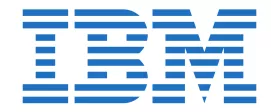What are chiplets?
By breaking up the system-on-a-chip model, the future of semiconductors is going to look very different from the last two decades.
Since the earliest days of semiconductors, researchers have been working to make transistors smaller and cheaper. Fitting more and more transistors into a smaller area can increase the achievable compute power, lower the cost to compute, or combinations of the two. Over the years, a near-constant drumbeat of innovation has driven extraordinary progress in transistor miniaturization: In the early 1970s, the smallest transistors were about 10 micrometers wide — and in 2021, IBM demonstrated that it’s possible to make these components with critical dimensions measured at just a few nanometers. That’s roughly 1,000 times smaller.
Computer chips today are of course considerably more powerful than they were in the earliest days of the personal computer and benefit enormously from the increased transistor density. In pursuit of more compact and lower-cost systems, a key strategy the industry has pursued was to develop SOCs (or systems on a chip). This is where multiple computing functions are swept up into a single chip, creating more complex systems in a smaller area. A typical SoC would include sub-blocks that enable general-purpose processing, custom accelerators, data storage, and high-speed input and output (I/O) communication. This SOC strategy has been extremely successful in making computing systems more functional and less expensive to produce.
To read the full article, click here
Related Chiplet
- DPIQ Tx PICs
- IMDD Tx PICs
- Near-Packaged Optics (NPO) Chiplet Solution
- High Performance Droplet
- Interconnect Chiplet
Related Blogs
- What are Chiplets and how they Assemble Into the Most Advanced SoCs
- What are Chiplets? - The Key Technology Behind Next-Gen Semiconductor Manufacturing
- The Automotive Industry's Next Leap: Why Chiplets Are the Fuel for Innovation
- Why Chiplets Are Key to Next-Gen Software-defined Vehicles
Latest Blogs
- Accelerating Chiplet Integration in Heterogeneous IC Package Designs
- Visualizing Cross-Die Paths in Multi-Die Designs
- 5 Chiplets Design Challenges Hampering Wider Take-off
- Scalable Testing of Xanadu’s Canadian made Quantum Photonic Chips with MPI Corporation’s Advanced Electro-Optic Probe Systems
- Addressing challenges and embracing advances with photonic package design
